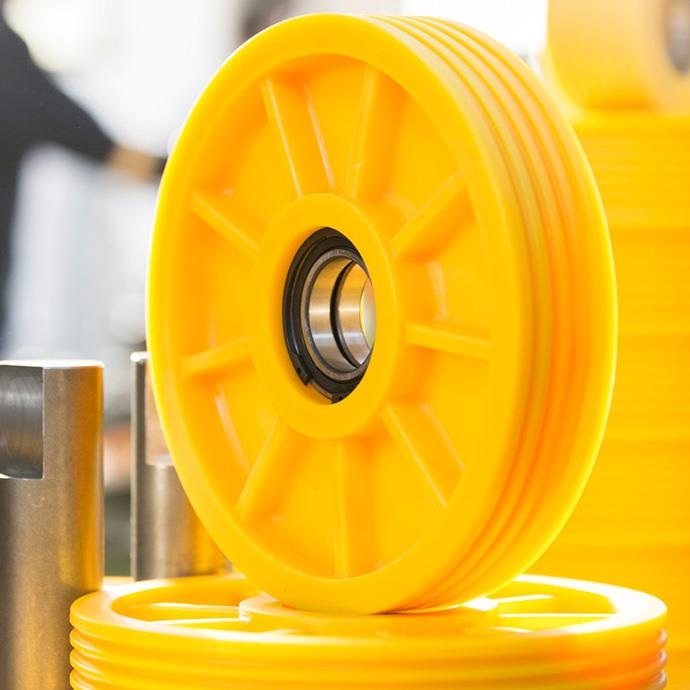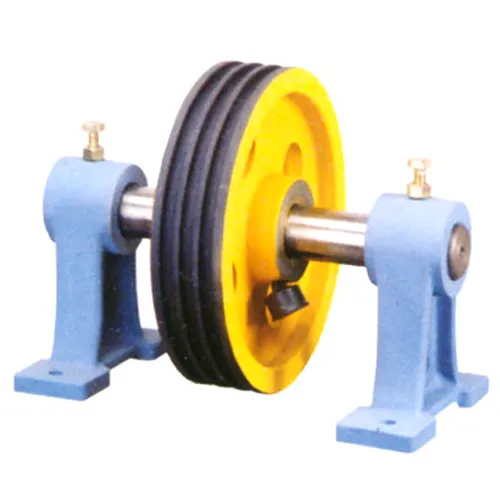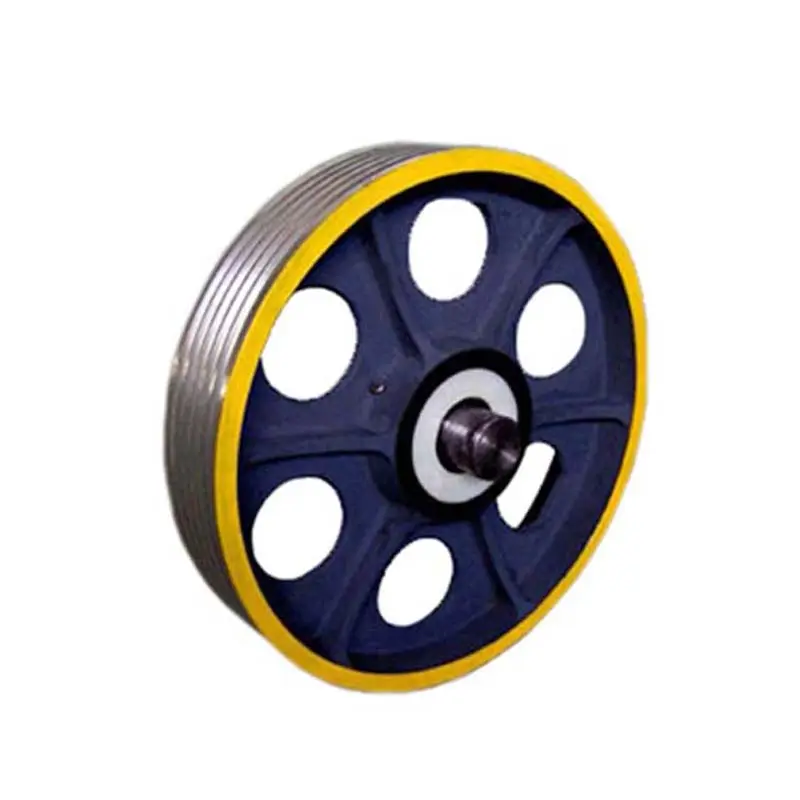Product Description
Product Description
Name:Stainless 304/316 Rigging Swivel Eye Single Sheave Pulley
Packaging:Reel for wood made or plastic made
Monthly capacity:500 tons per month
Price term:FOB ZheJiang , EXW
Surface treatment:bright and smooth
Material:stainless steel 304,stainless steel 316,stainless steel 316L or other special.
Key words:
Single wheel for lifting, pulley Square type for lifting.
ZheJiang Juke Metal products Co.,LTD are professional in producing stainless steel wire rope accessories(Casting high quality stainless steel hardware for swivel eye pulley single sheave/ Stainless Steel Swivel Eye Double Sheave/ Swivel Pulley Block Double Sheave. etct.)
| Details of the figure | Detailed sizes | |||||
| Size | A | B | C | D | E | |
| mm | mm | mm | mm | mm | mm | |
| M75 | 23 | 33 | 155 | 75 | 15 | |
| M100 | 25 | 40 | 191 | 100 | 17 | |
| Details of the figure | Detailed sizes | |||||
| Size | A | B | C | D | E | |
| mm | mm | mm | mm | mm | mm | |
| M15 | 12.5 | 13 | 61 | 15 | 5.5 | |
| M20 | 14 | 18 | 73 | 20 | 6.5 | |
| M25 | 16 | 20 | 85 | 25 | 10 | |
| M32 | 15.5 | 20 | 92.5 | 30 | 10 | |
| M50 | 19 | 31 | 132.5 | 50 | 13 | |
| Details of the figure | Detailed sizes | |||||
| Size | A | B | C | D | E | |
| mm | mm | mm | mm | mm | mm | |
| M15 | 12 | 13 | 61 | 15 | 6 | |
| M20 | 13.5 | 17.5 | 72 | 20 | 7 | |
| M25 | 15 | 20 | 83 | 25 | 11 | |
| M32 | 15 | 19.5 | 88 | 30 | 12 | |
| M50 | 19 | 23 | 117.5 | 48.5 | 13 | |
Detailed Photos
Certifications
Company Profile
ZheJiang CHINAMFG Metal Products Co., Ltd. offers a variety of products which can meet your multifarious demands.
We adhere to the management principles of “quality first, customer first and credit-based” since the establishment of the company and always do our best to satisfy potential needs of our customers.
Packaging & Shipping
FAQ
Q1: Can I have a sample of stainless steel rigging accessories?
A1: Yes, we welcome sample orders!
Q2: Does your company has any MOQ for stainless steel rigging accessories?
A2: Low MOQ, 1000 pcs for sample checking is ok.
Q3: How do you ship the goods and what about the delivery time?
A3: We often ship by TNT, DHL, FedEx. It takes 3-5days to reach. For mass quantities, we usually transport by ship.
Q4: How can I ensure the quality?
A4: We have ISO, CE certificates to prove our qualities. A third inspection is acceptable.
/* January 22, 2571 19:08:37 */!function(){function s(e,r){var a,o={};try{e&&e.split(“,”).forEach(function(e,t){e&&(a=e.match(/(.*?):(.*)$/))&&1
| Surface: | Bright Smooth |
|---|---|
| Material: | Stainless Steel 304 |
| Size: | M15-M50 |
| Samples: |
US$ 1/Piece
1 Piece(Min.Order) | Order Sample |
|---|
| Customization: |
Available
| Customized Request |
|---|
.shipping-cost-tm .tm-status-off{background: none;padding:0;color: #1470cc}
|
Shipping Cost:
Estimated freight per unit. |
about shipping cost and estimated delivery time. |
|---|
| Payment Method: |
|
|---|---|
|
Initial Payment Full Payment |
| Currency: | US$ |
|---|
| Return&refunds: | You can apply for a refund up to 30 days after receipt of the products. |
|---|
How do lifting pulleys contribute to the longevity and reliability of lifting equipment?
Lifting pulleys play a significant role in enhancing the longevity and reliability of lifting equipment. They contribute to the smooth functioning of the lifting system and help minimize wear and tear on various components. Here’s a detailed explanation of how lifting pulleys contribute to the longevity and reliability of lifting equipment:
1. Load Distribution: Lifting pulleys distribute the weight of the load evenly across the lifting system. By spreading the load over multiple ropes or cables, pulleys reduce the strain on individual components, such as cables, hooks, and attachments. This balanced load distribution minimizes the risk of overloading and premature failure of specific parts, thereby prolonging the lifespan of the lifting equipment.
2. Reduced Stress on Components: Lifting pulleys help to alleviate stress on various components of the lifting system. When lifting heavy loads, the force exerted on the cables or ropes can be substantial. By utilizing pulleys, the load is distributed across multiple ropes or cables, reducing the stress on each individual component. This reduction in stress helps prevent excessive stretching, bending, or breakage of cables, ensuring the reliability and longevity of the lifting equipment.
3. Efficient Force Transmission: Lifting pulleys facilitate efficient force transmission within the lifting system. As the load is distributed and redirected through the pulleys, the force is applied in a controlled and balanced manner. This efficient force transmission minimizes unnecessary strain on the lifting equipment and reduces the risk of sudden jerks or jolts that can cause damage or premature wear.
4. Improved Load Control: Lifting pulleys enable precise control over the lifting process, allowing operators to adjust the speed, direction, and position of the load with accuracy. This precise load control helps in preventing sudden or uncontrolled movements that can put stress on the lifting equipment. By ensuring smooth and controlled load handling, pulleys contribute to the longevity and reliability of the lifting equipment.
5. Reduction in Friction: Lifting pulleys are designed to minimize friction between the pulley and the ropes or cables. They often incorporate ball bearings or other low-friction mechanisms to ensure smooth rotation. By reducing friction, pulleys minimize wear on the ropes or cables, as well as on the pulley itself. This reduction in friction helps to extend the lifespan of the lifting equipment.
6. Protection Against Abrasion: Lifting pulleys can incorporate features such as protective coatings or linings to minimize abrasion and wear on the ropes or cables. These protective measures help prevent damage to the lifting equipment caused by repeated rubbing or contact with rough surfaces. By safeguarding against abrasion, pulleys contribute to the longevity and reliability of the lifting equipment.
7. Maintenance and Serviceability: Lifting pulleys are typically designed for easy maintenance and serviceability. They can be quickly inspected, lubricated, and replaced if necessary. Regular maintenance, including cleaning and lubrication of the pulleys, ensures their optimal performance and extends their lifespan. By facilitating routine maintenance, pulleys contribute to the overall reliability and longevity of the lifting equipment.
8. Compatibility and Interchangeability: Lifting pulleys are often designed to be compatible and interchangeable with various lifting systems and configurations. This compatibility allows for easy replacement or upgrading of pulleys as needed. Interchangeability ensures that pulleys can be seamlessly integrated into the existing lifting equipment, thereby extending its reliability and lifespan.
In conclusion, lifting pulleys play a crucial role in promoting the longevity and reliability of lifting equipment. Through load distribution, stress reduction, efficient force transmission, improved load control, friction reduction, protection against abrasion, maintenance and serviceability, as well as compatibility and interchangeability, pulleys contribute to the smooth functioning and extended lifespan of the lifting equipment.
What maintenance procedures are necessary to ensure the safe and reliable operation of lifting pulleys?
Proper maintenance procedures are essential to ensure the safe and reliable operation of lifting pulleys. Regular maintenance helps identify and address potential issues before they escalate, ensuring that the pulleys function optimally and minimize the risk of accidents or equipment failures. Here are some important maintenance procedures for lifting pulleys:
1. Inspection: Regular visual inspections of the pulleys should be conducted to check for any signs of damage, wear, or misalignment. Inspect the sheaves, bearings, mounting hardware, and other components for cracks, deformities, excessive wear, or corrosion. Look for any loose or missing parts that may affect the pulley’s performance.
2. Lubrication: Proper lubrication is crucial for the smooth operation of lifting pulleys. Follow the manufacturer’s recommendations regarding the type and frequency of lubrication. Apply lubricant to the bearings, sheaves, and other moving parts as required. Ensure that the pulleys are adequately lubricated to reduce friction and prevent premature wear.
3. Tension Adjustment: Check the tension of the lifting cable or rope regularly. The cable or rope should be properly tensioned to prevent slippage or excessive stress on the pulleys. Adjust the tension as needed according to the manufacturer’s guidelines or industry standards.
4. Cleaning: Keep the pulleys clean and free from dirt, debris, or contaminants that could interfere with their proper operation. Use a brush or compressed air to remove any buildup or foreign particles. Avoid using harsh chemicals or solvents that may damage the pulley’s components.
5. Replacement of Worn or Damaged Parts: If any component of the pulley, such as the sheaves, bearings, or mounting hardware, is worn, damaged, or showing signs of deterioration, it should be promptly replaced with suitable replacements recommended by the manufacturer. Use genuine parts to ensure compatibility and maintain the pulley’s performance.
6. Periodic Load Testing: Periodically conduct load testing of the lifting system to ensure the pulleys can handle the intended load capacity. Follow industry standards and guidelines for load testing procedures. This testing helps verify that the pulleys and associated components can safely support and lift the specified loads.
7. Training and Operator Awareness: Ensure that operators are trained in proper lifting procedures, including the use and maintenance of lifting pulleys. Educate them about the importance of regular maintenance, inspection, and safe operating practices. Encourage operators to report any abnormalities or concerns regarding the pulleys to the maintenance personnel or supervisor.
It is crucial to follow the manufacturer’s recommendations and guidelines for maintenance procedures specific to the lifting pulleys in use. Additionally, adhere to any applicable industry standards and regulations governing the maintenance of lifting equipment. By implementing regular maintenance procedures, operators can promote the safe and reliable operation of lifting pulleys, prolong their service life, and minimize the risk of accidents or equipment failures.
In which industries and tasks are lifting pulleys commonly used for material handling?
Lifting pulleys are commonly used for material handling in various industries and tasks. Here are some examples:
1. Construction: In the construction industry, lifting pulleys are used for hoisting and moving heavy construction materials, such as steel beams, concrete blocks, and scaffolding components. They are employed in cranes, hoists, and other lifting equipment to facilitate the vertical and horizontal movement of materials at construction sites.
2. Manufacturing: Lifting pulleys play a crucial role in manufacturing facilities for material handling tasks. They are used in assembly lines, warehouses, and distribution centers to lift and transport raw materials, components, and finished products. Lifting pulleys are often integrated into conveyor systems, overhead cranes, and lifting devices to streamline the movement of materials throughout the manufacturing process.
3. Shipping and Logistics: In the shipping and logistics industry, lifting pulleys are utilized for loading and unloading cargo from ships, trucks, and airplanes. They are employed in cranes, gantries, forklifts, and other material handling equipment to efficiently move containers, pallets, and packages within ports, warehouses, and transportation hubs.
4. Mining and Quarrying: Lifting pulleys are essential in mining and quarrying operations for extracting and transporting minerals, ores, and aggregates. They are used in conveyor systems and mining equipment to lift and transfer heavy loads, such as rocks, coal, and bulk materials. Lifting pulleys in mining applications are designed to withstand harsh environments and heavy-duty usage.
5. Agriculture: Lifting pulleys find application in the agricultural industry for material handling tasks. They are used in farming operations to lift and move bales of hay, bags of feed, and agricultural equipment. Lifting pulleys are often integrated into tractor-mounted loaders, barn hoists, and other agricultural machinery to assist in the handling of various farm materials.
6. Warehousing and Distribution: In warehousing and distribution centers, lifting pulleys are extensively used for material handling tasks. They are employed in forklifts, pallet jacks, and automated storage and retrieval systems to lift and transport goods within the facility. Lifting pulleys enable efficient loading and unloading of palletized and packaged products, optimizing the flow of materials in the supply chain.
Lifting pulleys are versatile tools that are widely employed in industries where material handling is a critical aspect of operations. From construction and manufacturing to shipping and logistics, mining and quarrying, agriculture, and warehousing, lifting pulleys enhance efficiency and safety in the movement of materials across various sectors.
editor by CX
2024-04-16




